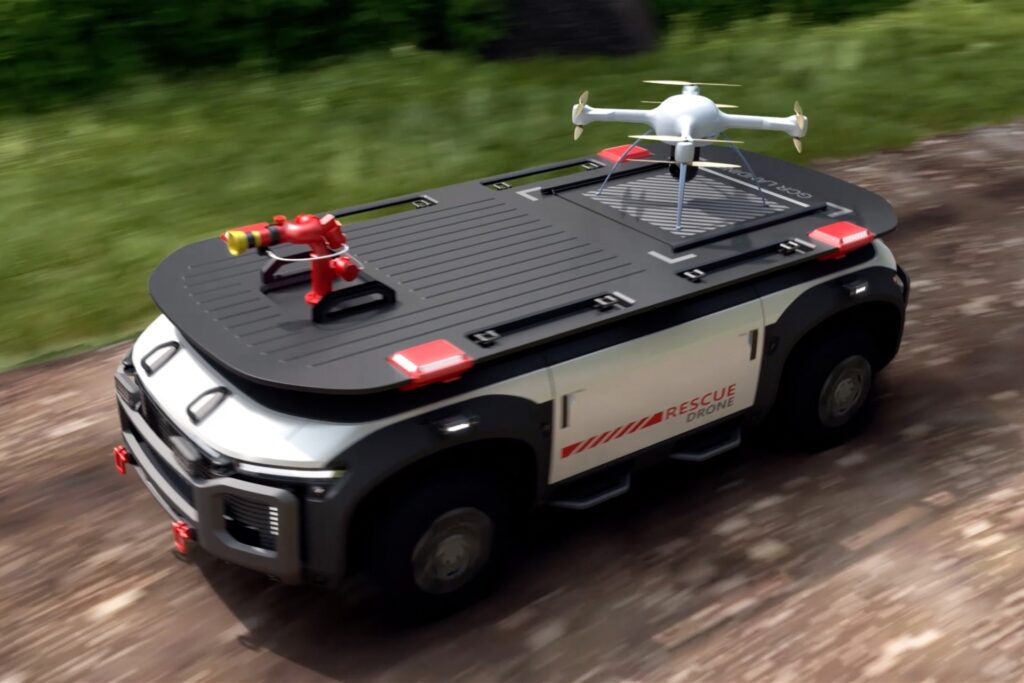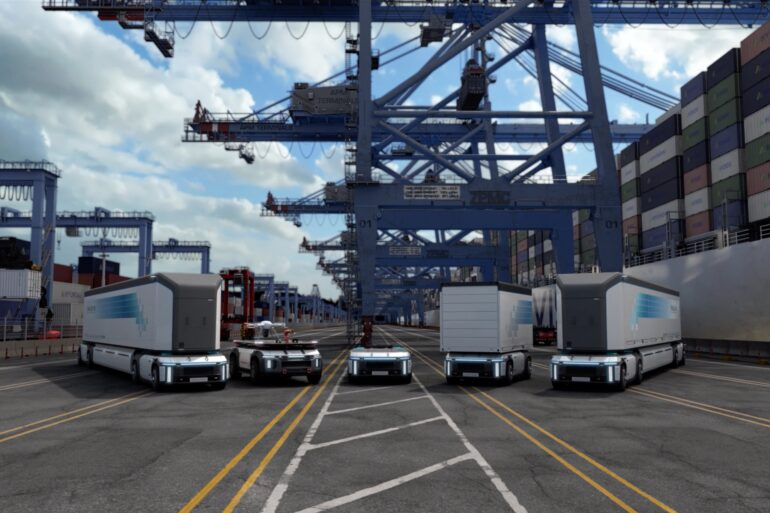‘Everyone, Everything and Everywhere’ was the announcement at Hydrogen Wave.
Hyundai Motor Group’s (HMG) vision is the full electrification of all new commercial vehicle models by 2028. In a bid to facilitate the transition to true sustainable mobility, HMG also intends to fully apply hydrogen fuel cell technology to its commercial vehicle lineup, as revealed during Hydrogen Wave.
“Hyundai Motor Group’s vision is to apply hydrogen energy in all areas of life and industry such as our homes, work-places and factories. The goal is to make hydrogen readily used for everyone, everything, and everywhere,” said Chairman Chung Eui-sun at the Hydrogen Wave online global forum. “We want to offer practical solutions for the sustainable development of humanity and with these breakthroughs, we aim to help foster a worldwide Hydrogen Society by 2040.”
hydrogen vision 2040.
HMG envisions hydrogen being used not only for transportation, but also in other industries and sectors and plans to achieve this by 2040.
The goal here is carbon neutrality.
Commercial vehicles have a much larger carbon footprint due to being driven longer and further than passenger vehicles. These reasons are why they are the perfect candidates for the implementation of this vision. As a result, HMG will launch all-new commercial vehicles fitted with hydrogen fuel cells and battery-electric technologies. By 2028 though, these will be fully equipped with fuel cells.
HMG has already started mass-producing a greatly improved version of the current XCIENT Fuel Cell — the world’s first mass produced fuel cell heavy-duty truck. It is also developing a tractor based on the XCIENT Fuel Cell that will be released in 2023. They also unveiled the ‘Trailer Drone’ concept — an autonomous hydrogen-powered container transportation system with a double e-Bogie configuration.
beyond just trucks and transportation.
Fuel cell technology has the potential for deployment across a myriad of transportation applications. These include high-performance vehicles, urban air mobility, robots, aircrafts and large ships. Due to its versatility, the scope of fuel cell technology can also be expanded beyond transportation to the energy sector. Application includes the provision of electricity and heating to buildings, urban energy sources and power plants.
In 2023, HMG plans to introduce a cost-effective next-generation fuel cell system to compete with battery-powered electric vehicles. This would be possible with economies of scale realised through HMG’s introduction of fuel cell technology to other industries and sectors.

During Hydrogen Wave, HMG showcased two power versions of the third-generation fuel cell stack at 100kW and 200kW respectively. Meant for various vehicle types, the 100kW stack is also designed to be modular. It can be stacked to provide outputs from 500kW to 1MW for various applications, such as emergency power systems for large ships and IT companies.
showcasing hydrogen fuel cell applications.
Alongside the fuel-cell stacks were showcased a selection of applications.

The Trailer Drone concept is a hydrogen-powered container transportation system capable of operating fully autonomously. It has a range of more than 1,000km from a single charge, comparable to existing container transportation systems. Due to the unique requirements of container transport applications and the way container terminals operate, HMG developed the ‘Fuel Cell e-Bogie’.
Rail bogies are wheel subframes that sit under every train car. The Fuel Cell e-Bogie sits under the container just like a rail bogie in an enclosed system with fuel cell propulsion and independent four-wheel steering. The Trailer Drone requires two fuel cell e-Bogies, allowing it to crab sideways and manoeuvre deftly in tight spaces. When multiple Trailer Drones are hooked up in ‘Cluster Mode’, this enables them to travel together in an almost train-like configuration.
Trailer Drones are just one of the Fuel Cell e-Bogie’s party piece, and can also handle other tasks such as ground logistics, construction, firefighting and disaster relief missions, thereby offering a truly multi-purpose platform, while being fully zero-emission and autonomous in operation.

In that vein, the Rescue Drone combines with a Fuel Cell e-Bogie to create a flying drone that can be operated remotely and autonomously for critical operations such as fire-fighting and life-saving. Meanwhile, the ground-based unit features an independent steering system for in-place turning manoeuvres and ‘crab-walk’ driving, with a claimed driving range of 450 to 500km from a single charge.

To satisfy the car-enthusiast’s palette, HMG showcased a concept hydrogen-powered hybrid sports car, named the Vision FK. With a maximum output of over 500kW, the Vision FK concept does 0-100km/h in a claimed under-four seconds, while boasting over 600km of range courtesy of a fuel cell energy converter, with a high-power rear-wheel drive plug-in powertrain.
For more details, watch the full Hydrogen Wave video here.
Feeling hesitant about hydrogen fuel cell transportation? Check out some more familiar EVs and hybrid cars here instead!






